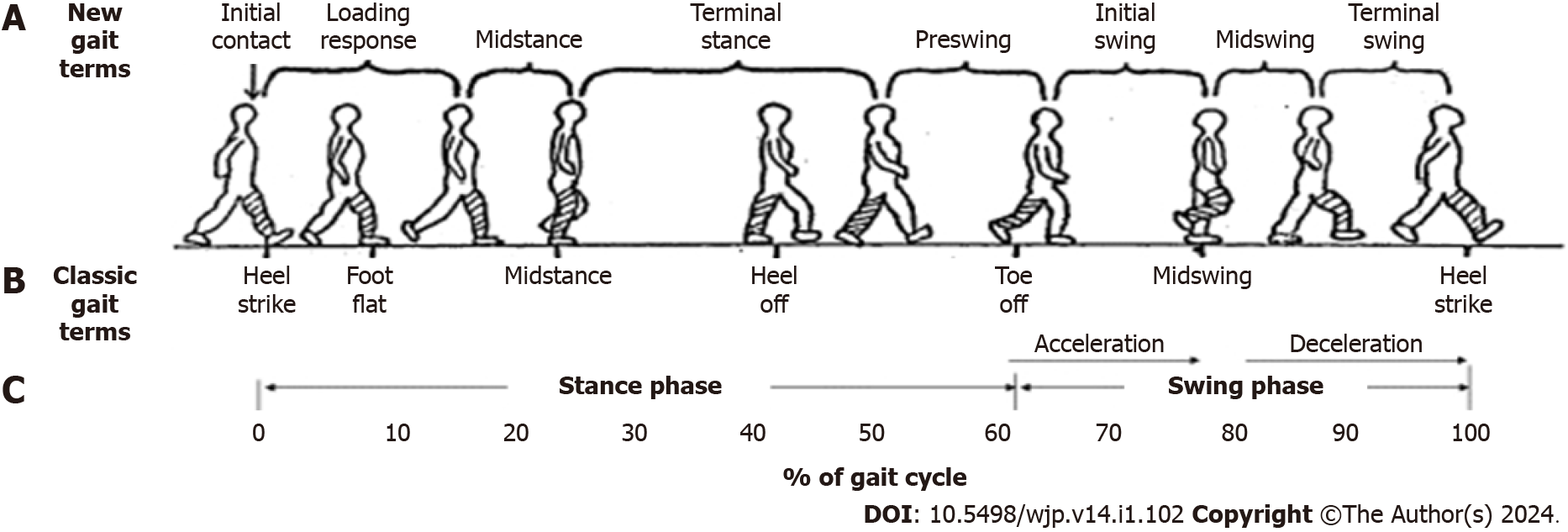Copyright
©The Author(s) 2024.
World J Psychiatry. Jan 19, 2024; 14(1): 102-110
Published online Jan 19, 2024. doi: 10.5498/wjp.v14.i1.102
Published online Jan 19, 2024. doi: 10.5498/wjp.v14.i1.102
Figure 1 The arrangements of numbers in the walking trail making test.
WTMT: Walking trail making test.
Figure 2 The parameters captured by the Intelligent Device for Energy Expenditure and Activity.
(1) Speed (m/s), as the mean velocity for two successive strides; (2) Step length (m), representing the half distance between consecutive points of initial contact of the same foot; (3) Cadence (steps/min), representing the number of steps/stairs per minute; and (4) Stance phase percentage (%), reflecting the duration of the stance phase (starting from initial contact and ending at toe-off for a particular foot) divided by stride time. A: The new gait terms of gait cycles; B: The classic gait terms of gait cycles; C: The percentage of stance/swing phase of gait cycles.
- Citation: Zhao HY, Zhang ZQ, Huang YH, Li H, Wei FY. Performance of the walking trail making test in older adults with white matter hyperintensities. World J Psychiatry 2024; 14(1): 102-110
- URL: https://www.wjgnet.com/2220-3206/full/v14/i1/102.htm
- DOI: https://dx.doi.org/10.5498/wjp.v14.i1.102










